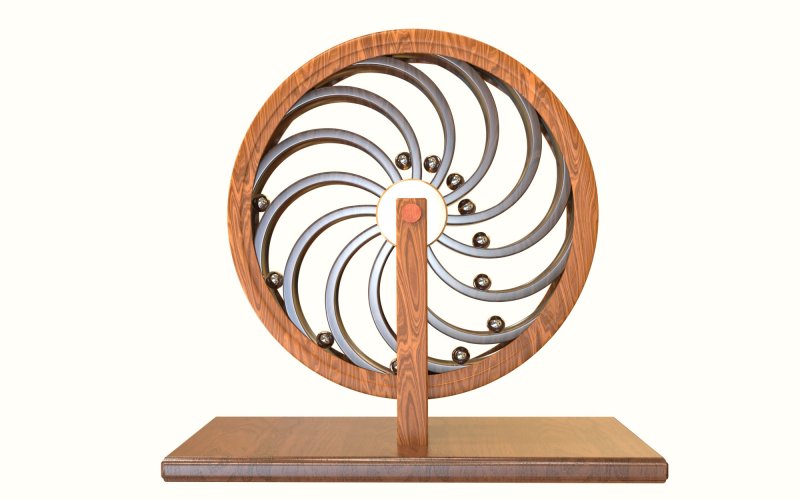The mentioned “physics toys” represent an experimental verification of one of the basic laws of physics (and nature) — the law of conservation of energy. Energy is actually stored work and we can store this work in various forms of energy (chemical, electrical, magnetic, mechanical, …). And these toys just transfer individual forms of energy into each other. In an ideal case, such a spillover of energy could take an infinite time but since in the real world, every action is accompanied by energy losses, the initial amount of energy (that is, the work we put in to move the toy) from the visible forms (movement, height) will slowly transfer to the environment in the form of losses, typically heat.
If I chose “Newton’s seesaw” as an example, then it is easy to show how the whole process takes place. By lifting the outer ball we do work (it depends on the weight of the ball and the height to which we lift it). The ball will thus have potential energy (I used the work to increase the position of the ball). I release the ball and the ball begins to move downwards — its height (and therefore its positional energy) decreases. But at the same time, its speed (and therefore kinetic energy) increases. Upon impact, the ball has zero positional energy but maximum kinetic energy and does work on the ball it hits. After impact, the first ball stops (it no longer has any positional or kinetic energy) and the second ball moves. It again hits the neighboring ball and transfers its energy to it. In this way, the balls transfer energy to each other until the very last one — the acquired energy has nowhere to transfer it to and therefore starts to move. Its speed (and therefore kinetic energy) will begin to slowly decrease (the ball slows down as it moves upwards) but its height (and therefore potential energy) will increase. If no losses accompany this action, the ball will rise to the same height from which we dropped the ball first. For the whole time, the sum of kinetic and potential energy is constant — the law of conservation of energy applies.
Now it’s up to us to make this toy so that the losses are as small as possible.
In conclusion, I will just add that with the above procedure, we can explain the principle, but no longer why the same number of balls are bounced at the end and not twice as much, with the balls rising to half the height. For this, it is necessary to supplement the description of the mentioned toy with the law of conservation of momentum.
Want to ask something?
Send us an e-mail with the subject “Physics mysteries” to the address:
We can't wait to tackle your interesting questions!





